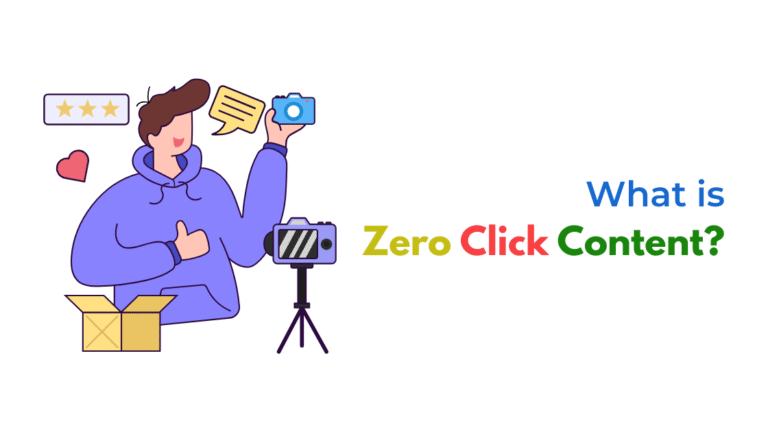If your e-commerce site isn’t ranking for product keywords, it could be due to poor on-page optimization, duplicate content, thin descriptions, slow site speed, or missing structured data. Fixing these SEO fundamentals can improve visibility and drive more qualified traffic.

Introduction
Ranking for product-specific keywords is essential for driving purchase-ready traffic to your online store. If your e-commerce website isn’t showing up for these terms on search engines like Google, it’s likely due to a mix of technical, content, and strategic SEO issues.
Here’s a detailed breakdown of the most common causes—and how to fix them.
1. Poor On-Page SEO for Product Pages
If your product titles, meta descriptions, headers, and URLs don’t include your target keywords, search engines may not understand the relevance of your pages.
What to do:
- Use unique, keyword-rich product titles and meta descriptions.
- Optimize H1 tags with the product name + primary keyword.
- Add relevant LSI (semantic) keywords in product descriptions.
- Include keyword variations in image alt tags and file names.
2. Duplicate Product Descriptions
Using manufacturer-supplied or copied content across multiple product pages can result in duplicate content penalties or indexation issues.
Fix it by:
- Writing original product descriptions for each item.
- Adding unique value through buyer guides, size recommendations, or usage tips.
- Using canonical tags where duplication is unavoidable (e.g., color variants).
3. Thin Content on Product Pages
Product pages with very little descriptive or contextual content are often labeled “thin” by Google, hurting your chances of ranking.
Solutions:
- Expand descriptions to include benefits, features, specs, comparisons, and FAQs.
- Add user reviews or testimonials to enrich page content.
- Embed video demos or how-to content when possible.
4. Missing Structured Data (Schema Markup)
Without structured data, search engines may not interpret your product pages correctly, missing key elements like price, availability, or ratings.
What to implement:
- Use JSON-LD or Microdata schema for Product, Review, and Offer.
- Validate your schema with Google’s Rich Results Test.
- Ensure each product has a unique schema block.
5. Slow Page Load Speed
Page speed is a known ranking factor, especially for mobile searches. If your product pages take too long to load, users and bots alike may bounce.
Improve speed by:
- Compressing and lazy-loading images.
- Using a CDN (Content Delivery Network).
- Minimizing JavaScript and CSS files.
- Switching to faster, SEO-optimized hosting.
6. Not Mobile-Friendly
Over 60% of e-commerce traffic comes from mobile devices. If your store isn’t responsive, you’ll struggle to rank.
Check and fix:
- Use responsive design.
- Ensure buttons and links are easy to tap.
- Avoid pop-ups that block the main content.
7. Weak Internal Linking Structure
If product pages are buried deep in the navigation or don’t receive internal links, Google may not discover or prioritize them.
How to improve:
- Link from category pages and blog posts to product pages.
- Create “Best Sellers” or “Featured Products” widgets on the homepage.
- Ensure products are <3 clicks from the homepage.
8. Lack of Backlinks to Product Pages
If your product pages lack backlinks (even internal), they’ll have lower authority compared to your competitors’.
To build backlinks:
- Publish buyer’s guides or product comparisons that link to product pages.
- Get influencer reviews or mentions with backlinks.
- Use guest posting to point traffic to strategic product pages.
9. Indexing and Crawl Issues
Sometimes, technical barriers prevent product pages from being indexed at all.
Audit your site with tools like:
- Google Search Console → Coverage & URL Inspection
- Screaming Frog SEO Spider
- Semrush Site Audit
Check for:
- Noindex tags on product pages.
- Canonical tags pointing to other URLs.
- Blocked pages in robots.txt.
10. Poor Keyword Targeting Strategy
If you’re targeting overly broad or highly competitive keywords, your product pages may never rank.
Instead:
- Target long-tail keywords like:
- “Best organic cotton T-shirt for sensitive skin”
- “Waterproof DSLR camera backpack under $100”
- Use tools like Ubersuggest, Ahrefs, or Semrush to discover terms that are lower in competition.
Final Thoughts: Fixing Product Keyword SEO
Ranking e-commerce product pages takes more than just adding keywords. You need a well-optimized site architecture, unique content, a fast mobile experience, structured data, and a strong internal linking strategy.
Once you align your on-page SEO, technical foundation, and keyword targeting, you’ll begin to see better rankings for product keywords—and more qualified traffic that actually converts.

How Socinova Can Help
At Socinova, we help e-commerce businesses rank higher with advanced product SEO strategies. From keyword research and content optimization to fixing structured data and boosting site speed—we do it all.
Let’s grow your product visibility. Reach out to us today for a custom e-commerce SEO audit.




